Science is the top journal, up there at the scholarly summit alone with Nature and (for biomedical science) with Cell. Unlike the other two, Science is a non-profit publication, owned by the American Association for the Advancement of Science (AAAS). How does this top journal deal with research integrity? Is Science better than its commercial competitors? Maybe in virtue signalling.
Cell, the flagship of Cell Press and owned by Elsevier, made it their policy to not give a flying toss. They have no problem with ignoring the most blatant fraud and rejecting retraction requests from universities. Whoever hoped that things would change at Cell when its long-term editor Emilie Marcus left in early 2018, was taught a lesson now. A dead parrot can perfectly manage a Cell‘s editor’s duties regarding fabricated data in published papers. Which is at least consequent and it is up to you if you want to trust such this journal. Nature, the flagship of the ever-breeding Nature journal family is part of Springer Nature and owned by Holtzbrinck. Recent appointment of Magdalena Skipper as Editor-in-chief seems to have changed this journal’s past Cell-like attitude to research fraud. Carlos Lopez-Otin lost a paper and his mentoring award, Janine Erler and Amato Giaccia were dealt a retraction despite opposition from Stanford University. A betterment, let’s hope it continues.

And Science?
Well, in 2016 this journal refused to follow a university’s request to retract a fraudulent paper by Olivier Voinnet. Maybe a one-off? Read this article for a glimpse of what Science is sitting on, and those papers are not that old.
Science had its heydays of shame when 4 fabricated papers from the infamous US virologist Robert Gallo about his stolen and misinterpreted AIDS virus discovery were published in 1984. These Science papers cost the lives of many haemophiliacs who died in US from contracting HIV via donated blood because of Gallo’s faulty but exclusively patented blood test. None of these four papers was retracted, Science is in fact exactly the opposite of ashamed here. Instead, Science atones by celebrating Gallo regularly. In 2009, with a eulogy under the demented title “Unsung Hero Robert C. Gallo” (signed, among others by the Italian fraudster Giorgio Zauli). In 2015, Science excitedly informed us that Gallo was bringing an AIDS vaccine to the clinic. And just last month, Science published a perspective paper by Gallo et al on how polio vaccines can save the world from COVID-19.
You see, nobody gets blacklisted. If Science does retract a paper against authors’ wishes, it will be under immense pressure, reader protests generally lead nowhere. A ridiculously fraudulent Science 2004 paper from the lab of the undead Count Fakula Michael Karin is doing fine, because it is both uncorrectable and unretractable, if you get what I mean.
These days, even corrections come out of Science with such a struggle that it appears like chronic constipation. Now, the AAAS journal took to discreetly hiding corrections inside the supplemental material, without attributing a DOI. To a clueless reader, the paper will appear pristine and unblemished, like a fresh snow. This was done last year to explain a bizarre image similarity in a paper co-authored by the Nobel Prize winner Fraser Stoddart, another example is below.
The image integrity expert Elisabeth Bik has been screening published research for years, to flag duplications and other irregularities. She also found serious issues in Science papers; 4 months ago Bik unloaded the old evidence on PubPeer, presumably because the journal just didn’t care. I present it below.
But the desire to look tough on fraud is there. In January 2020, the new Science Editor-in-Chief, Holden Thorp, issued an editorial on research integrity:
“One of the questions I am often asked is how the Science journals correct or retract papers. With the rapid analysis that can happen on social media, these questions are being raised faster than ever before. We don’t seek to hide from these efforts: Image sleuth Elisabeth Bik (@MicrobiomDigest) recently stated on Twitter that she needed a list of journal editors’ emails and I immediately responded with mine (which is not hard to find at right).
Science journals prefer to publish a retraction signed by all authors. Deciding to retract in cases where not all authors agree can require a lengthy investigation by universities. In such cases, we publish an Editorial Expression of Concern (EEoC) in the meantime, to quickly alert readers that concerns have been raised about the reported work. We hope that making this information available promptly helps mitigate the waste of time, effort, and funds by researchers who might otherwise base future work on papers that are later retracted.”
Thorp was much applauded for that, but did he really mean it seriously? Or did he rather admit that Science leaves it to authors and their universities to figure out what to do with a fraudulent paper?
The following papers were flagged by Elisabeth Bik years ago, and Science apparently still refuses to do anything. Not even an expression of concern which Thorp so determinedly spoke about.
Let us start with a study by the former Dutch Minister for Research, then Minister for Interior, now cancer vaccine entrepreneur Ronald Plasterk. In his pre-politics capacity as the director of the Hubrecht Institute, molecular biologist Plasterk published this parade of fake data:
Titia Sijen, Florian A Steiner, Karen L Thijssen, Ronald H A Plasterk Secondary siRNAs result from unprimed RNA synthesis and form a distinct class Science (2007) doi: 10.1126/science.1136699
The first author Titia Sijen is now Senior Scientist at Netherlands Forensic Institute. The irony is rich, because Bik and others did forensics analysis on her own paper and found it to be forensically fabricated. The evidence is already 5 years old:
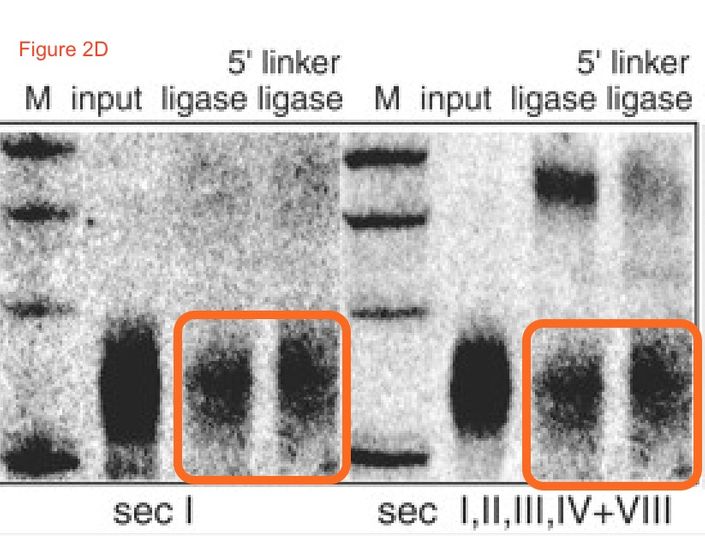
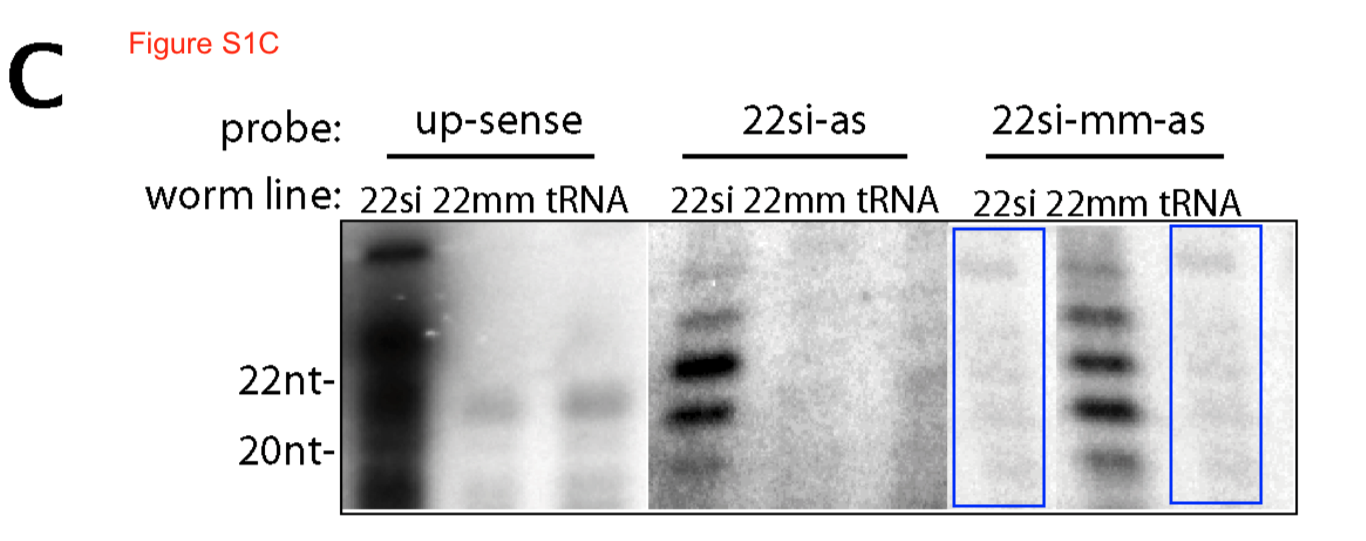


Maybe Sijen provided to the journal her own expert forensic assessment that the gel images are perfectly fine? The second author Florian Steiner is PI at University of Geneva in Switzerland. Together with Plasterk’s political background, those are all valid reasons for Science to continue pretending there is nothing wrong with that paper. Btw, there are more problematic Plasterk lab papers, especially the obviously fake Kloosterman et al Nucleic Acids Res 2004, and it has different coauthors:
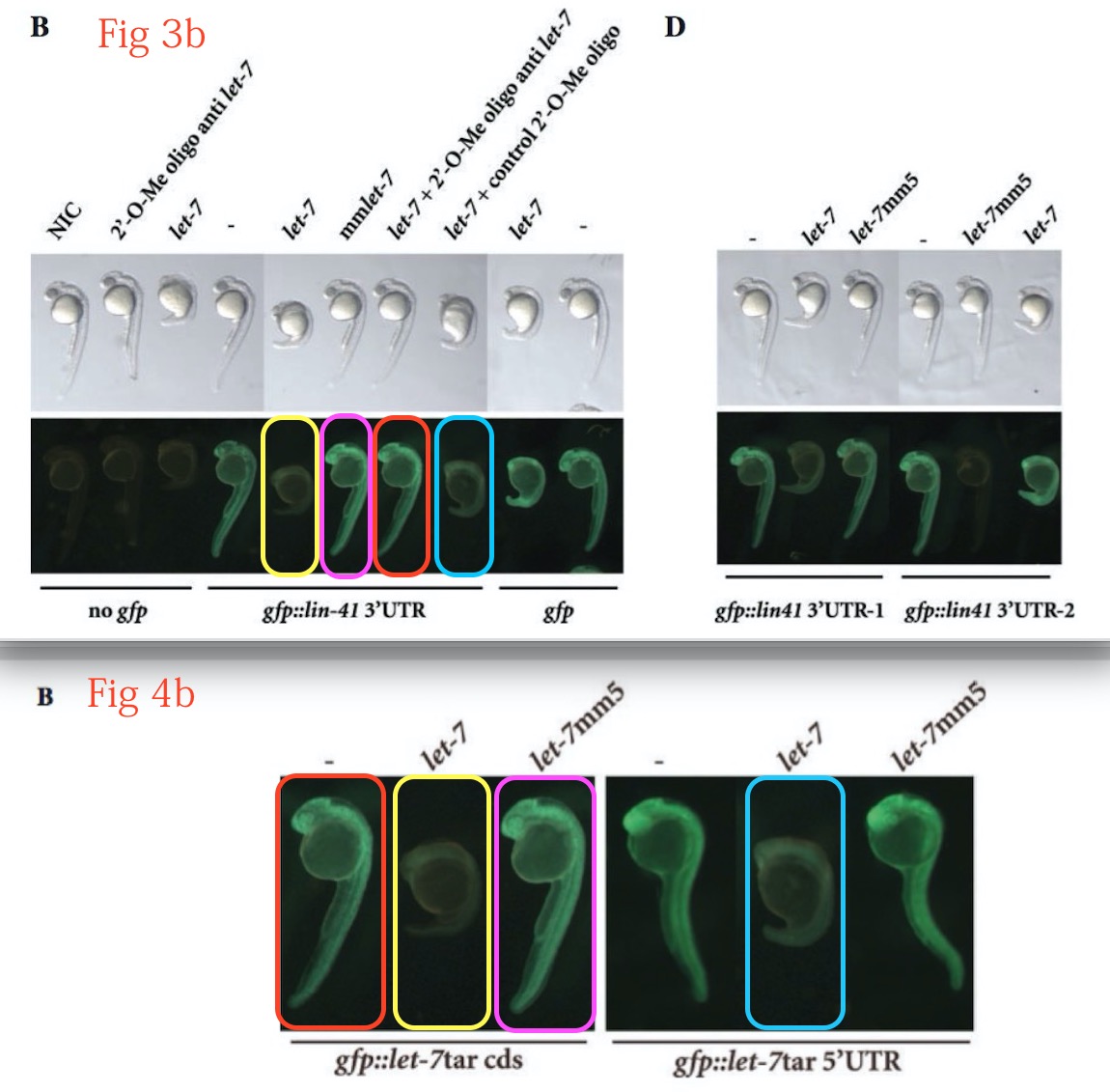

But the last author is again Plasterk, draw your own conclusions. The Kloosterman et al 2004 paper was fixed with an unresolvable expression of concern in 2016.
Update 8.07.2020: It turned out, Bik notified Science of the problem with Sijen et al 2007 paper already in April 2015 (when the evidence was posted on PubPeer), and then remind the editors in September 2017. Here is proof that the journal failed to contact the Utrecht University or the Hubrecht Institute (previously led by Plasterk). Hubrecht’s new leaders, Alexander van Oudenaarden and Jeroen den Hertog, wrote to me:
“We are taking scientific integrity very seriously and started an investigation soon after we were made aware of the PubPeer allegations 4 months ago focusing on the Sijen et al. Science 2007 paper. We asked Dr. Plasterk for a reaction and to retrieve the original experimental data from our archives. Unfortunately due to the COVID-19 this process was delayed because our archives were, until recently, not accessible. The archive reopened and we asked Dr. Plasterk to retrieve the original data. We expect feedback within one month.“
Science however did not even issue an expression of concern, maybe because there are special rules for important people.
Update 21.11.2020. The Sijen et al 2007 paper has been retracted yesterday, due to absense of raw data. Plasterk claims in national media he only heard of the problems this year (Bik says she informed him and the journal already in 2015), pretends retraction was his own decision, blames peer reviewers for failing to spot the problems, and insists conclusions remain unaffected.
These tweets are also insightful:
Everyone who publishes in Science is an important scientist. Cancer researcher Douglas Green of St Jude Children’s Research Hospital is very important and also an AAAS member, which should end the debate about the following Photoshop hack job:
Jerry E Chipuk, Tomomi Kuwana, Lisa Bouchier-Hayes, Nathalie M Droin, Donald D Newmeyer, Martin Schuler, Douglas R Green Direct activation of Bax by p53 mediates mitochondrial membrane permeabilization and apoptosis Science (2004) doi: 10.1126/science.1092734


Cloned gel bands, who cares. This Science paper is surely fine as well:
Jerry E Chipuk, Lisa Bouchier-Hayes, Tomomi Kuwana, Donald D Newmeyer, Douglas R Green PUMA couples the nuclear and cytoplasmic proapoptotic function of p53 Science (2005) doi: 10.1126/science.1114297
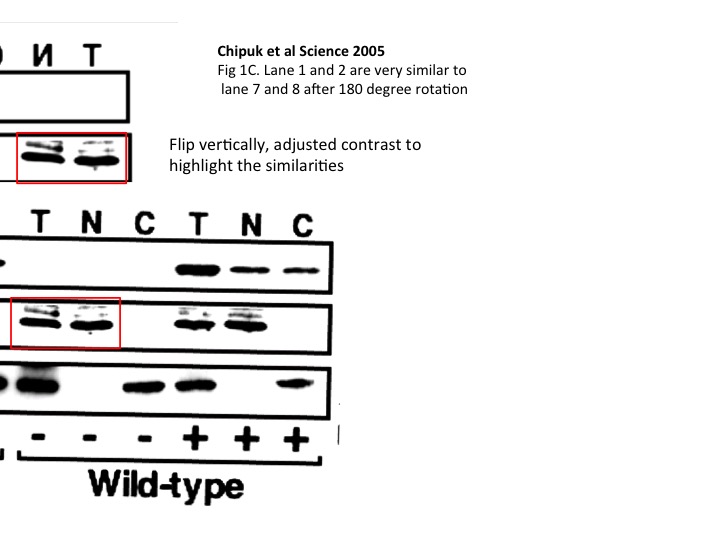
First author of both papers, Jerry Chipuk, is now professor at Icahn School of Medicine at Mount Sinai, raising the next generation of creative scientists like himself, so which retractions are you, reader, talking about, you failed scientist? A PubPeer commenter invited Green to address data integrity concerns in 3 other papers from his lab, especially the disastrous Zimmermann et al J Cell Science 2002, with its fabricated cell assays and flawed cytometry. That one was also never even corrected, because if Green is not interested you can’t make him apparently.
But even Green is a nobody compared to David Baltimore, the Nobel Prize winner who around 30 years ago tripped and fell on his arse over the research fraud affair of his mentee, Thereza Imanishi-Kari. In brief, Baltimore, co-author on a fraudulent Imanishi-Kari paper in Cell, chose sides and threw around his Nobel-heavyweight, tough but unwisely, and instead being a quiet Imanishi-Kari affair it exploded into The Baltimore Case which involved politicians, media and elite lawyers. Imanishi-Kari and Baltimore were officially exonerated (incidentlaly, just as Gallo was), a popular book was written accusing the whistleblower, but still. Fraud is fraud. Look, what is this from the Baltimore lab:
Alexander Hoffmann, Andre Levchenko, Martin L Scott, David Baltimore The Ikappa B-NF-kappa B Signaling Module: Temporal Control and Selective Gene Activation Science (2002) doi: 10.1126/science.1071914
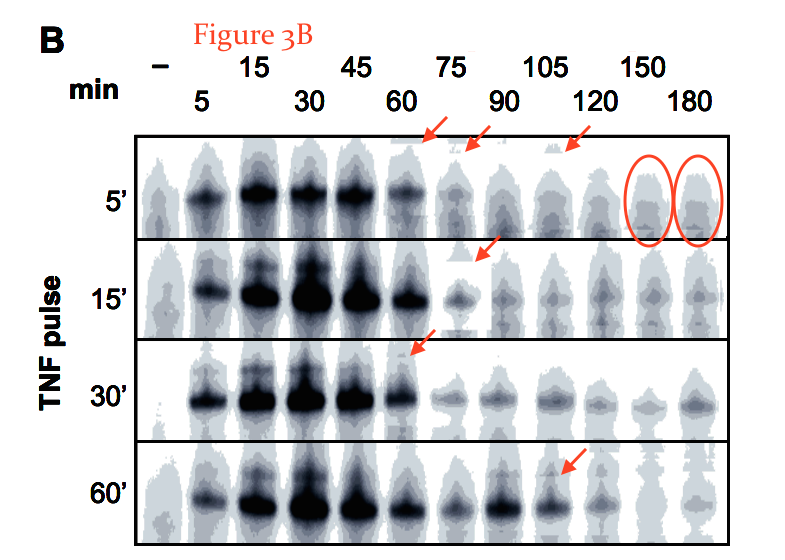
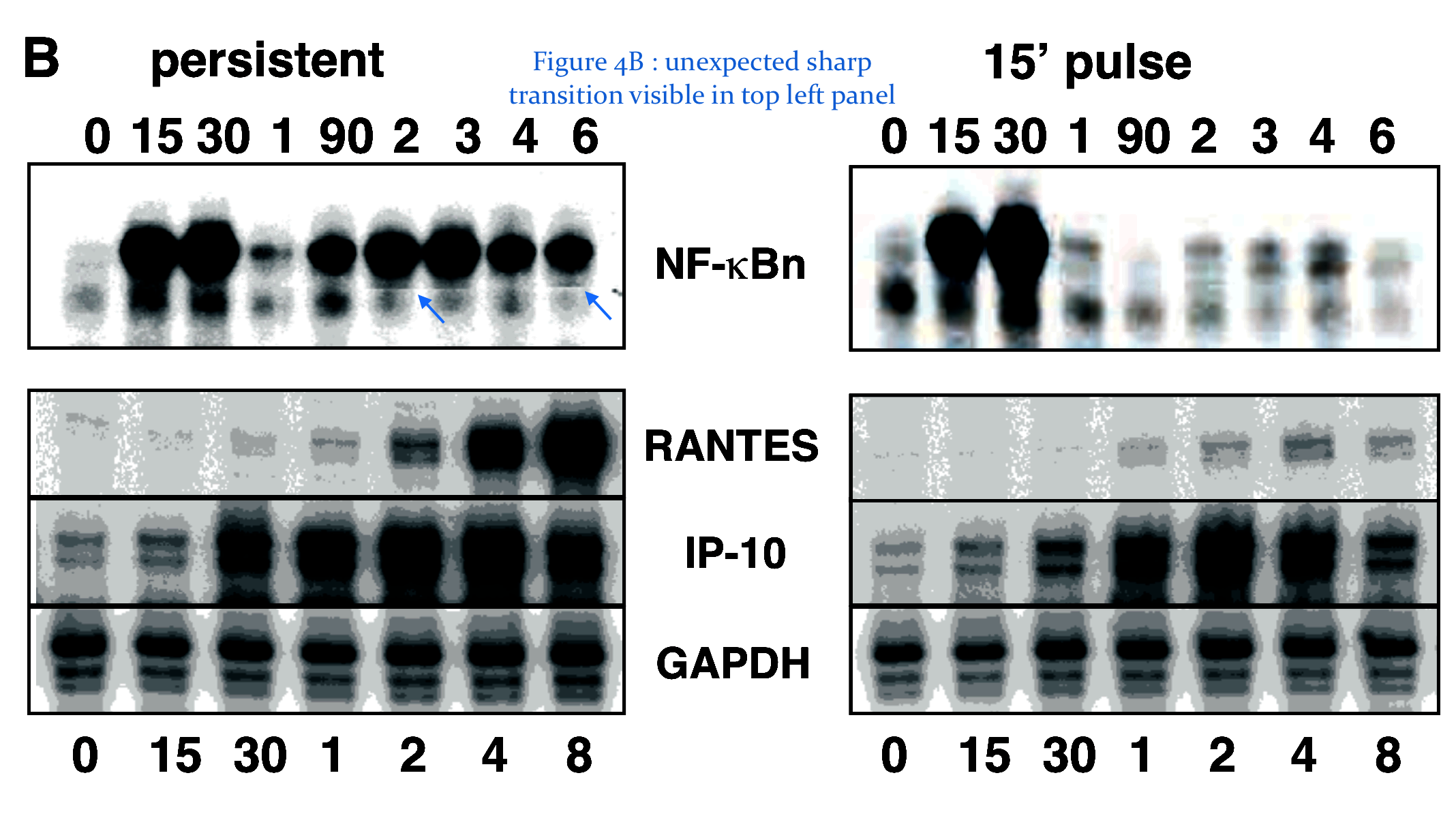
Usually, this would be called plain data fakery, but don’t forget that this never can happen in Baltimore’s lab. He was exonerated, remember? The first author Alexander Hoffmann is now professor and institute director at UC Los Angeles. Science wisely decided to let this paper sleep, the Baltimore Case being over and closed. Or maybe it was simpler, the paper was considered too old, like this one from University of North Carolina Chapel Hill:
H. Wang, Z Q Huang, L Xia, Q Feng, H Erdjument-Bromage, B D Strahl, S D Briggs, C D Allis, J Wong, P Tempst, Y Zhang Methylation of histone H4 at arginine 3 facilitating transcriptional activation by nuclear hormone receptor Science (2001) doi: 10.1126/science.1060781
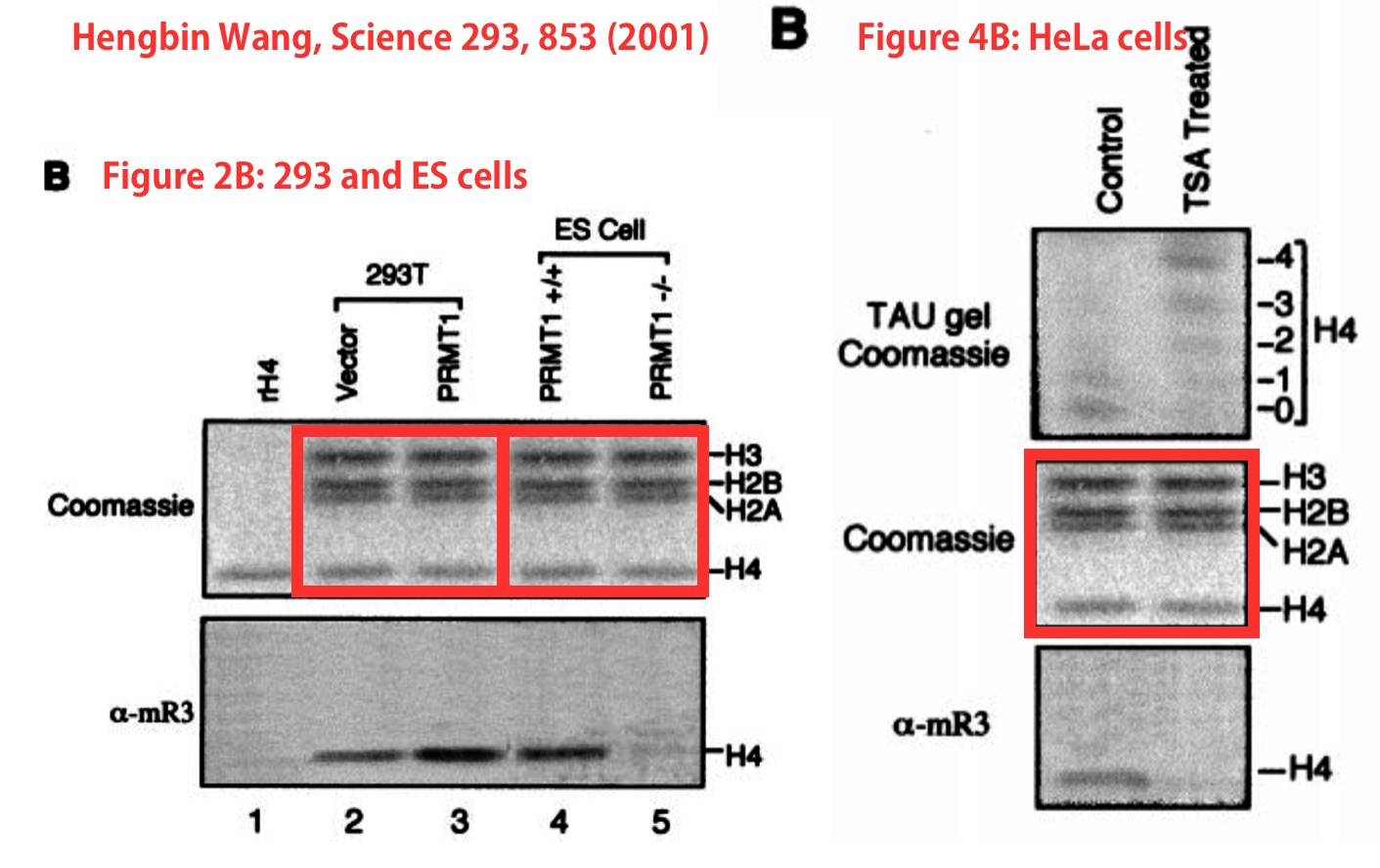
Who wasn’t copy-pasting gel images 20 years ago to get a paper into a top-level journal, shall cast the first stone. In another case, Science apparently decided that because a paper was already corrected for something else, no further action was needed when new stuff came to light.
Nitai C Hait, Jeremy Allegood, Michael Maceyka, Graham M Strub, Kuzhuvelil B Harikumar, Sandeep K Singh, Cheng Luo, Ronen Marmorstein, Tomasz Kordula, Sheldon Milstien, Sarah Spiegel Regulation of histone acetylation in the nucleus by sphingosine-1-phosphate Science (2009) doi: 10.1126/science.1176709
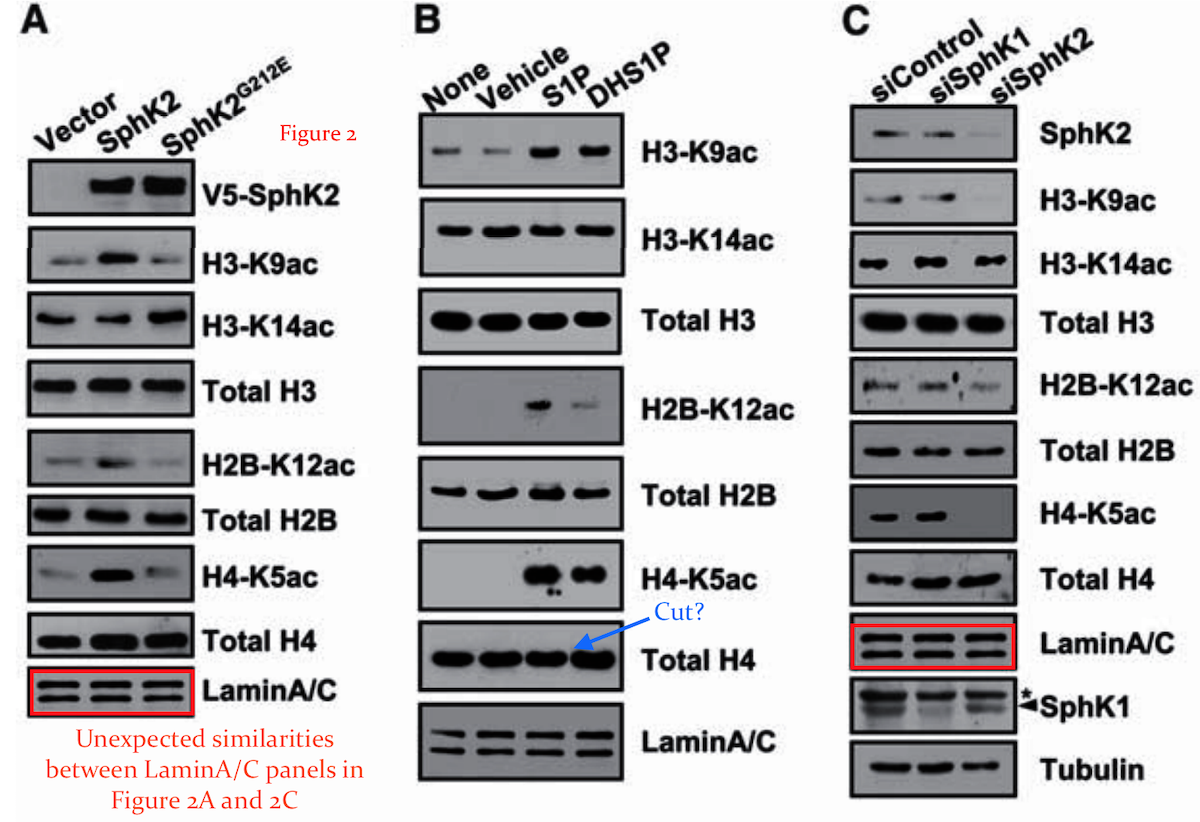
That looks like a minor issue, a duplicated gel and some splicing, easy to resolve. The correction from 2009 merely stated: “In Fig. 4A, the second group of columns should be labeled “V5-SphK2,” not “H3-K9achK2.”“, nothing to do with Figure 2 here. Maybe Science was afraid to mess with the Virginia Commonwealth University, it a place were much worse things happen, unchecked. From Virginia to Texas, the University of Texas Southwestern:
Eva Van Rooij, Lillian B Sutherland, Xiaoxia Qi, James A Richardson, Joseph Hill, Eric N Olson Control of stress-dependent cardiac growth and gene expression by a microRNA Science (2007) doi: 10.1126/science.1139089
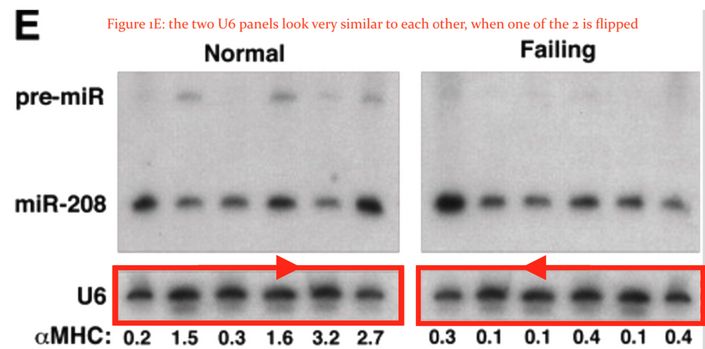
No correction also for that cloned and flipped gel, maybe Science doesn’t believe in loading controls. We now leave Texas and visit the University of Wisconsin, where something really naughty from the lab of Shegeki Miyamoto was published in Science 14 years ago.
Zhao-Hui Wu, Yuling Shi, Randal S Tibbetts, Shigeki Miyamoto Molecular linkage between the kinase ATM and NF-kappaB signaling in response to genotoxic stimuli Science (2006) doi: 10.1126/science.1121513



Same first author published another problematic paper with Miyamoto, Wu et al Mol Cell 2010.

Badly falsified gels, and yet so far, there was no correction, no expression of concern, nothing. Maybe the following paper from the lab of Pier Paolo Pandolfi will get a correction, now that the former star cancer researcher was found guilty of sexual harassment, asked to leave Harvard, and then kicked out as scientific director in Italy before he even started there? Pandolfi has no teeth left to bite anyone.
Carlotta Giorgi, Keisuke Ito, Hui-Kuan Lin, Clara Santangelo, Mariusz R Wieckowski, Magdalena Lebiedzinska, Angela Bononi, Massimo Bonora, Jerzy Duszynski, Rosa Bernardi, Rosario Rizzuto, Carlo Tacchetti, Paolo Pinton, Pier Paolo Pandolfi PML regulates apoptosis at endoplasmic reticulum by modulating calcium release Science (2010) doi: 10.1126/science.1189157

Or maybe Science will drop this one, too. We shall now briefly leave America and visit other countries. First, China, where the plant scientists at the Peking University designed a composite leaf:
Xinyan Zhang , Ying Zhu , Xiaodan Liu , Xinyu Hong , Yang Xu , Ping Zhu , Yang Shen , Huihui Wu , Yusi Ji , Xing Wen , Chen Zhang , Qiong Zhao , Yichuan Wang , Jian Lu , Hongwei Guo Plant biology. Suppression of endogenous gene silencing by bidirectional cytoplasmic RNA decay in Arabidopsis Science (2015) doi: 10.1126/science.aaa2618

That paper was commended as “Great article” by Alexis Maizel, now professor at the University of Heidelberg, Germany. Back in 2005, Maizel published the following study together with his mentor Detlef Weigel, Max Planck Institute director in Tübingen, not too far away.
Alexis Maizel , Maximilian A Busch, Takako Tanahashi, Josip Perkovic, Masahiro Kato, Mitsuyasu Hasebe, Detlef Weigel The floral regulator LEAFY evolves by substitutions in the DNA binding domain Science (2005) doi: 10.1126/science.1108229
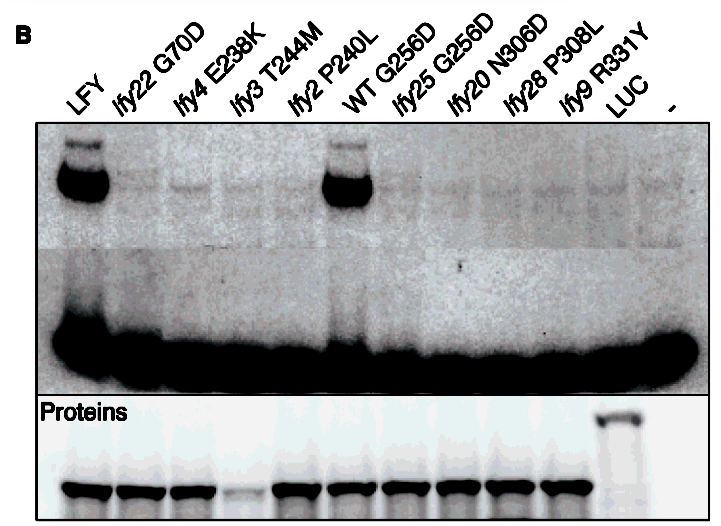
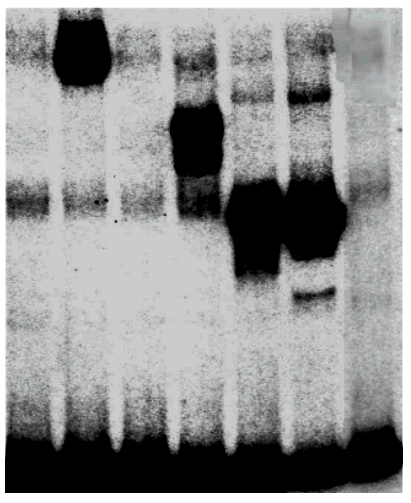
Weigel quickly replied and announced to investigate. He soon confirmed that the issues “indeed do not conform to good scientific practice” and announced “We are currently in contact with Science to issue a formal correction“.
However, Science decided not to issue a formal correction after all. They published instead an informal, secret correction in October 2018, hidden in the supplementary material, just like with the paper of the Nobelist Stoddart. Maybe Science only issues formal corrections for really outrageous fraud. Like that Voinnet paper I mentioned above, or this here, from the lab of Turgay Dalkara at Haceteppe University in Turkey:
Hulya Karatas, Sefik Evren Erdener, Yasemin Gursoy-Ozdemir, Sevda Lule, Emine Eren-Koçak, Zümrüt Duygu Sen, Turgay Dalkara Spreading depression triggers headache by activating neuronal Panx1 channels Science (2013) doi: 10.1126/science.1231897
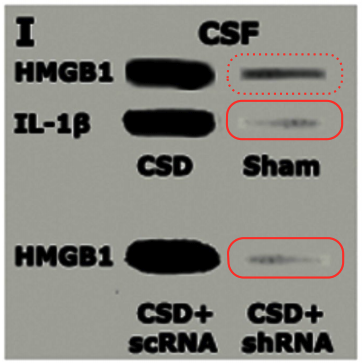
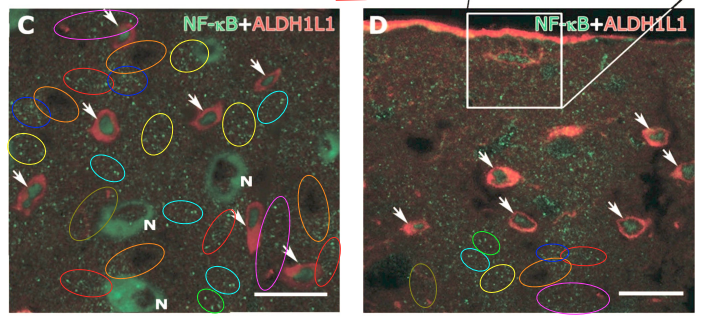
The Erratum was published swiftly, soon after the concerns were raised 5 years ago. But it is a very dishonest Erratum.
Those were the cases flagged by Elisabeth Bik. But there is more on PubPeer, it is a pity the search by journal function is not available to non-subscribers. Like the two papers by the influential neuroscientist and President of the Stanford University, Marc Tessier-Lavigne. It seems a former lab member named Elke Stein had a penchant for data falsification, back in the HHMI lab in San Francisco. This can happen. Yet Tessier-Lavigne never retracted any of their joint papers, there is no expression of concern, not even correction. The Stanford president simply lets these fraudulent studies stand, even if it means to pollute the scientific literature and to sabotage others’ research.
E. Stein , Y Zou , M Poo , M Tessier-Lavigne Binding of DCC by netrin-1 to mediate axon guidance independent of adenosine A2B receptor activation Science (2001) doi: 10.1126/science.1059391

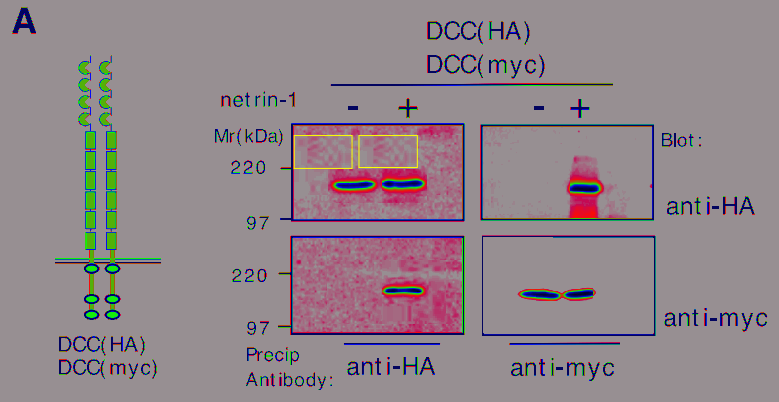
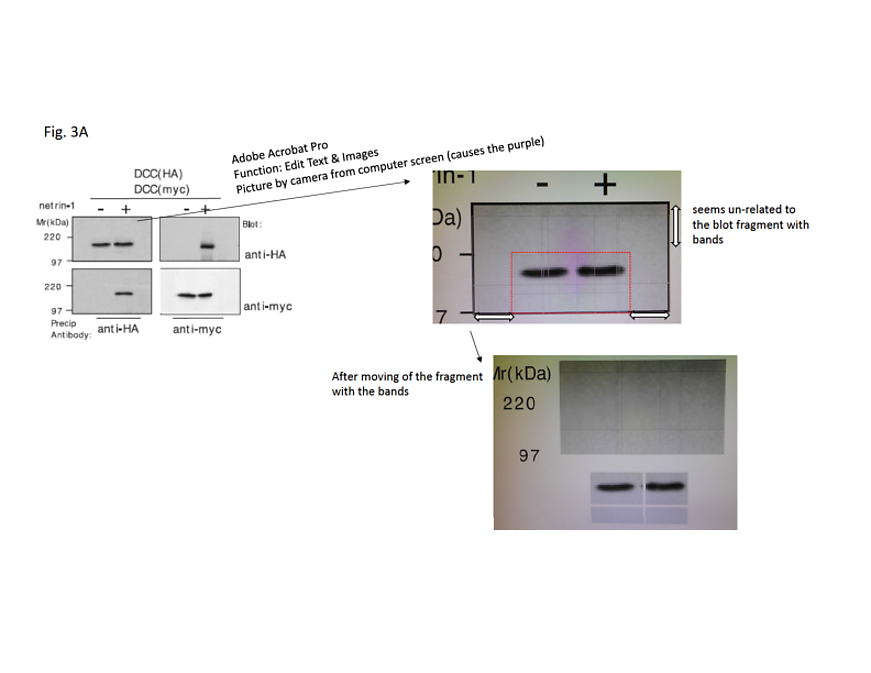
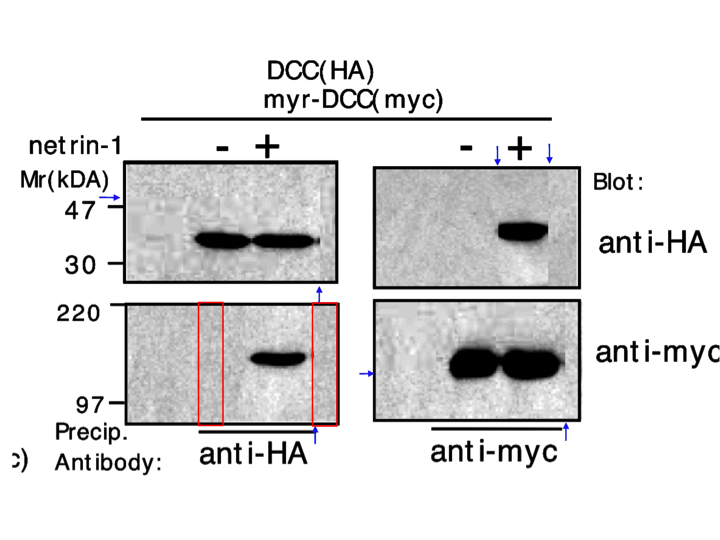
For refusing to correct the literature and retract fraudulent stuff like this, Tessier-Lavigne recently received yet another award, the half-a-million-dollar Gruber Neuroscience Prize. Btw, it was his own Stanford university which tried to prevent the Erler & Giaccia retraction in Nature. But now, look at this Stein & Tessier-Lavigne masterpiece:
E. Stein , M Tessier-Lavigne Hierarchical organization of guidance receptors: silencing of netrin attraction by slit through a Robo/DCC receptor complex Science (2001) doi: 10.1126/science.1058445
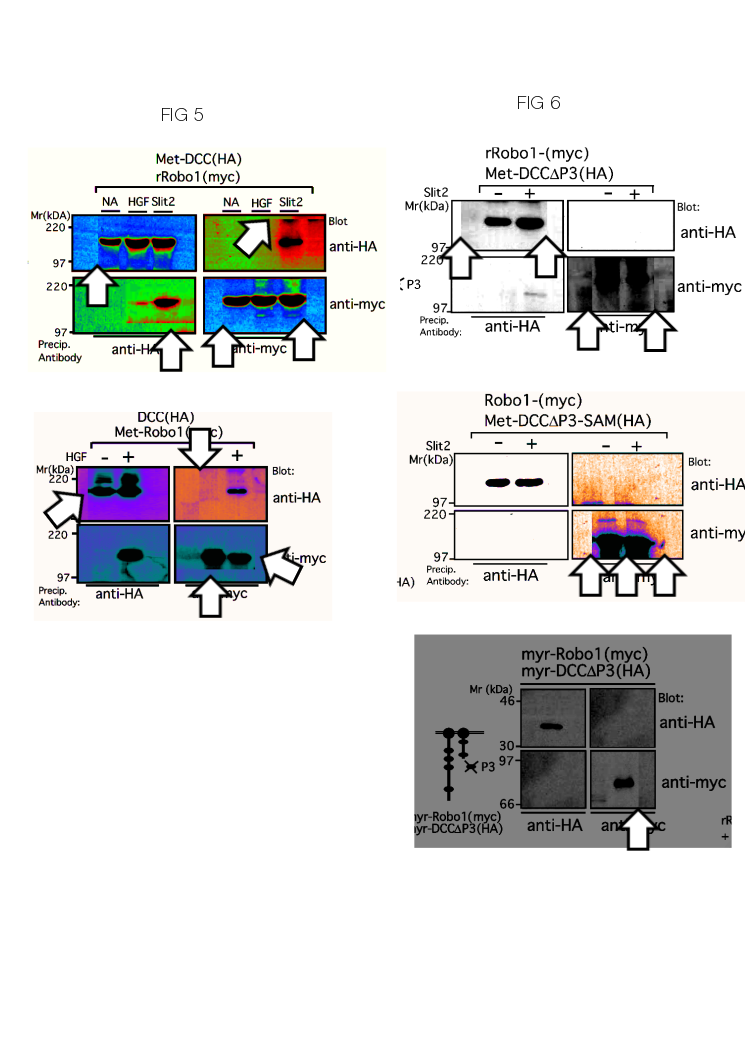

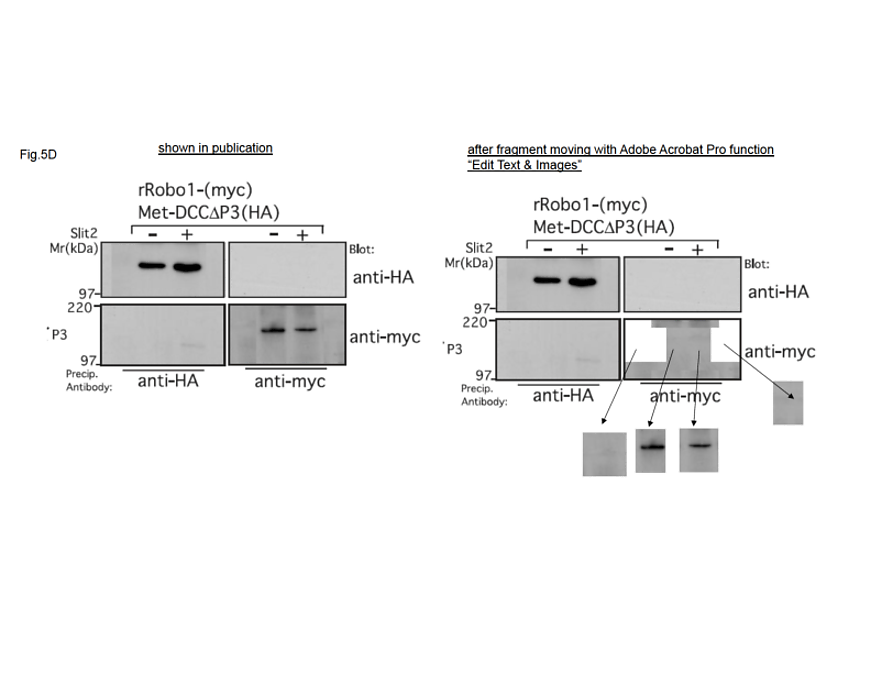
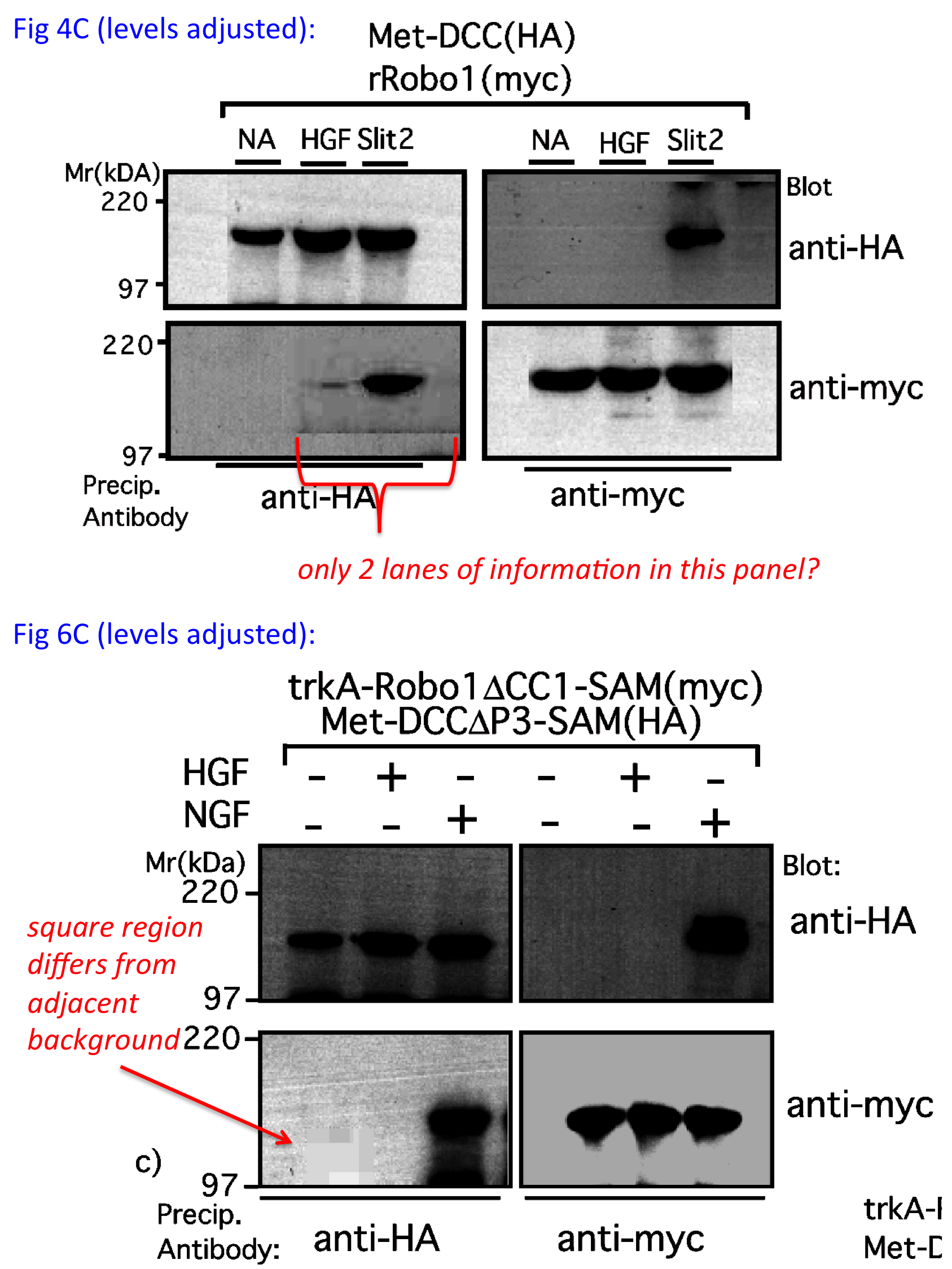
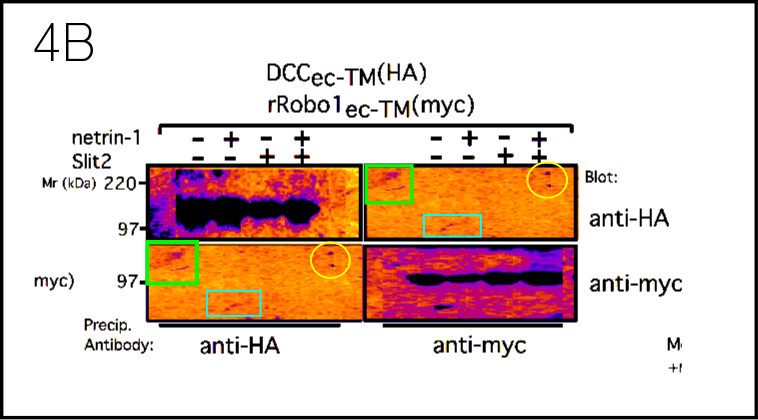

There are 6 more Tessier-Lavigne papers on PubPeer, of which 3 are co-authored with Stein, who made it to associate professor to Yale, where her own LinkedIn and ORCID CV claim she still works. However, Yale website search only returns old press releases, the most recent mention of Stein as Yale professor is from the 2010-2011 report. It seems, Yale had let Stein go soon after that, indeed this was when she founded several businesses (the best one Stein set up however already in 1990, called “Scientists against peer sabotage“). But now, Stein is back under Tessier-Lavigne’s wings as “visiting faculty scholar” in Stanford. Maybe it is the reward for keeping mumm?
Maybe I should admit here that my issue with Science became personal, after in a March 2020 Science article the work of my collaborators Smut Clyde, Morty and Tiger BB8, done together with Elisabeth Bik and originally published on my site, was stolen and misattributed to two utterly unrelated, but apparently much more respectable people, one professor and one publisher employee. The Editor-in-Chief Thorp apparently decided that I am a time-traveling plagiarist, since he wrote to me:
“Our reporters stand by their story and their reporting, and they have my support. I realize you don’t agree with that and may have more comments on social media and your blog.“
Science has spoken.

Donate!
If you are interested to support my work, you can leave here a small tip of $5. Or several of small tips, just increase the amount as you like (2x=€10; 5x=€25). It’s less than one issue of Science 😉
€5.00


As an amateur outfit, the journalistic and social responsibility aspects of Science are noticeably weak compared to professional organizations like Nature. Still, usually the worst you will see in Science is sneaky-fake stuff, while Nature presents full-bore outrageous fantasies like that infamous CAR-T cell paper where there was not a single real result. I guess Nature editors have stars in their eyes, those at Science live in dread of retaliation from AAAS grandees, and at Cell they are shackled by the Elsevier mission to publish anything by anyone willing to pay. Don’t know if that adds up to a broken system, but I agree it seems badly bent. The scientific publication fish is rotting from the head down.
LikeLike
“that infamous CAR-T cell paper where there was not a single real result”
Wait, what?
LikeLike
Here you go. https://forbetterscience.com/2019/01/14/texas-photoshop-massacre-in-nature/
LikeLike
See also https://www.uva.nl/en/content/news/professor-appointments/2018/09/ronald-plasterk-professor-novel-strategies-for-access-to-therapeutics.html?cb
LikeLike
I like Magadalena Skipper of Nature. I liked Jeremy Berg, as a rare exception among Science editor-in-chiefs. Holden Thorp is poor at his job, always blames others (the number 1 American disease), and is exactly what the world doesn’t need right now.
LikeLike
Paper in Science Advances commented 9 months ago by Hoya Camphorifolia. No reaction from journal so far.
https://pubpeer.com/publications/CE109FFD3D5C1C52AF692877111ECB
LikeLike
Pingback: Academic Dynasties: meet the Nussenzweigs – For Better Science
Pingback: 已举报约3500篇问题论文,她专挑中国“下手”?|专访 – 贝贝爱宠网
Science. 2007 May 11;316(5826):900-4. doi: 10.1126/science.1141194. Epub 2007 Apr 26.
SCFFbxl3 controls the oscillation of the circadian clock by directing the degradation of cryptochrome proteins
Luca Busino 1, Florian Bassermann, Alessio Maiolica, Choogon Lee, Patrick M Nolan, Sofia I H Godinho, Giulio F Draetta, Michele Pagano
Affiliation
1Department of Pathology, NYU Cancer Institute, New York University School of Medicine, 550 First Avenue, MSB 599, New York, NY 10016, USA.
PMID: 17463251 DOI: 10.1126/science.1141194
https://pubpeer.com/publications/E42BA2EAC9D708A1DFADA7A3CC608B
2014 correction.http://science.sciencemag.org/content/sci/suppl/2007/04/24/1141194.DC1/Busino.SOM-corrected.pdf
Correction (10 October 2014): Panels B and C of fig. S4 have been revised. They now show the correct immunoblot loading controls (actin), and labels indicating exposure to cycloheximide for various times (as indicated in the figure legend) have been added. The interpretation of the data is unchanged.
How to account figure S6A?https://pubpeer.com/publications/E42BA2EAC9D708A1DFADA7A3CC608B#17
How to account for figure S10?https://pubpeer.com/publications/E42BA2EAC9D708A1DFADA7A3CC608B#23
LikeLike
Why no one is tracking the reviewers? we are all aware of club members who accept each other’s papers.
LikeLike
Pingback: The Legacy of Joan Massague – For Better Science
Pingback: Silvain Lesné is a failed scientist – For Better Science
Science paper, Brown University, problematic data ++.
https://pubpeer.com/publications/7FFA2115219A544A3865EEB4ECA784
LikeLike
Ah, Devasis Chatterjee. Holden Thorp will probably insist his science is “technically correct”. And Science will say that Elisabeth Bik has no f***ing idea what she’s talking about.
LikeLike
Y Eugene Chin with Eric W.-F Lam!
https://pubpeer.com/publications/D1558562E3DB10410BA9466ADD62CF
LikeLike
Devasis Chatterjee/Eugene Chin co-production.
https://pubpeer.com/publications/386C545E0D8CC8CD3BE95B9E00F54D
LikeLike